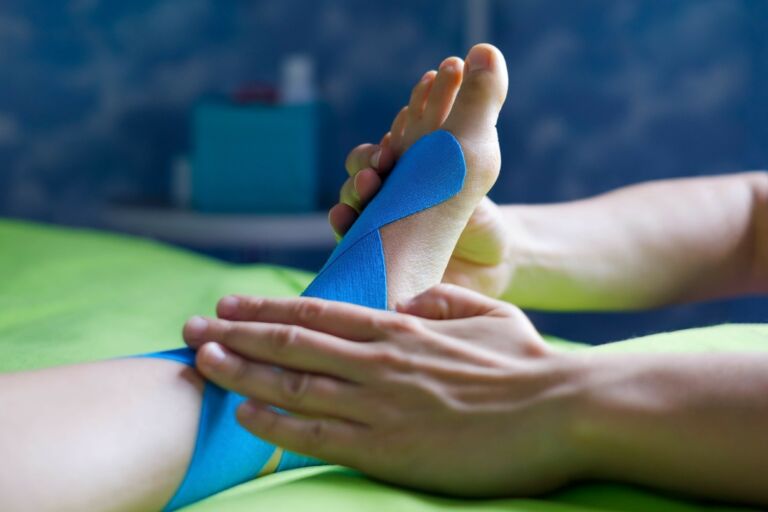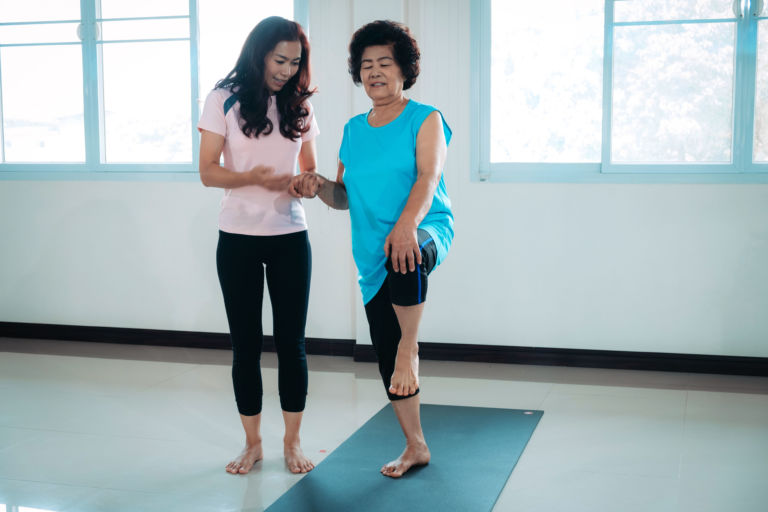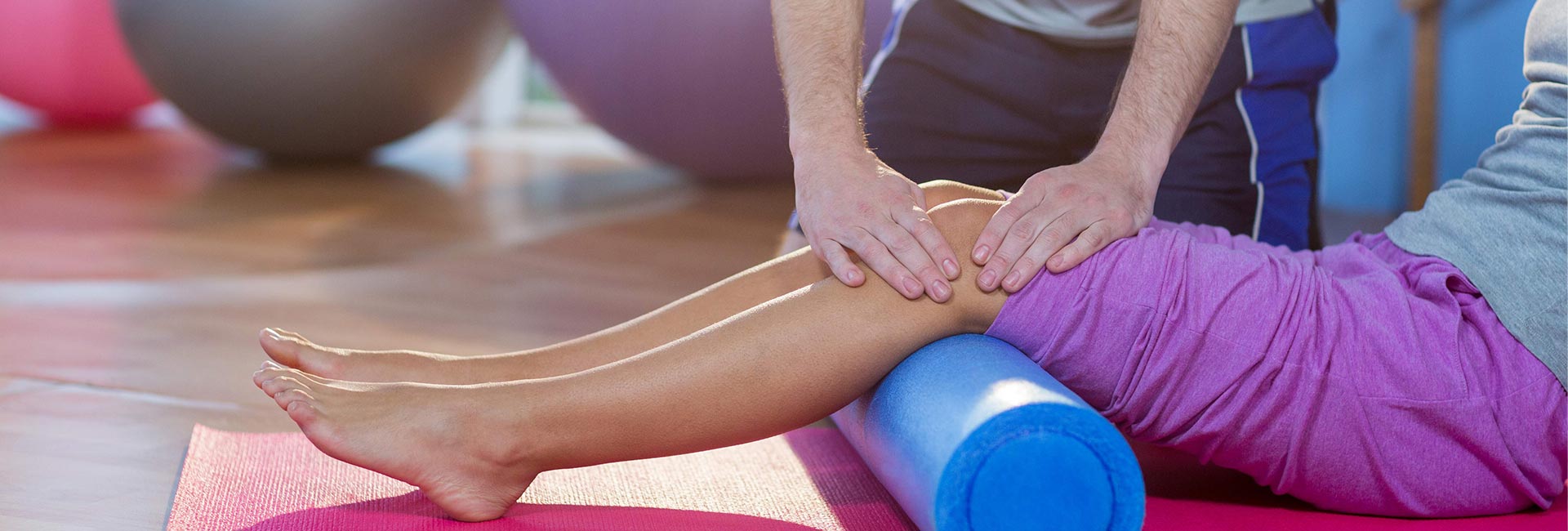Lupus Awareness Month
In recognition of Lupus Awareness Month, at Therapeutic Associates Physical Therapy we support the nationwide effort to raise awareness of the impact this disease can have on individuals. Additionally, we want to take this opportunity to spotlight some of the ways PT can help those living with lupus. Through customized physical therapy treatment, patients with lupus can work with their PT to manage pain, improve mobility, optimize fitness and mitigate risks of osteoporosis and cardiovascular disease. With a customized plan of care, patients with lupus can pursue their goals whether they want to travel, play sports, pursue passion projects or simply improve their independence and self-care.
What is lupus?
Lupus is a chronic autoimmune disease in which a person’s immune system attacks healthy body tissues. It can affect a person’s skin, joints, heart, lungs, kidneys, circulating blood cells, and brain.1
There are several kinds of Lupus, and the most common kind is Systemic Lupus Erythematosus. About 1 in 2,000 people in the United States have Lupus, and 9 out of 10 of them are women.2
There is no cure for lupus, but medications and lifestyle can help control it.
What are lupus symptoms and side-effects?
In recent years, celebrities including Selena Gomez, Toni Braxton, and Nick Cannon have used their platforms as public figures to improve public understanding of what it is like to live with lupus.3 From fatigue and joint pain to organ damage and medication side effects, the impacts of lupus are widespread and vary greatly between individuals with the condition. People with lupus commonly experience periods of worsened symptoms, called flares, and times of remission.1
Some of the most common symptoms of lupus include joint swelling and pain, muscle pain, fatigue, rash (especially on the face, called a “butterfly” rash), fever, chest pain with deep breathing, sun sensitivity, hair loss, swollen glands and mouth ulcers. Problems with kidney, lung, gastrointestinal, nervous system, and thyroid function can also occur.4
Why do people with lupus need physical therapy?
Since it can affect so many body systems, it is important for individuals with lupus to have a team of knowledgeable healthcare providers working together to keep them feeling their best. A physical therapist (PT) is an important member of this team.
PTs help individuals with lupus to manage their physical symptoms (fatigue, arthritis, muscle, and tendon pain), as well as other health effects of lupus (such as cardiovascular disease and osteoporosis).

What is PT for lupus?
- It is beneficial to establish care with a physical therapist early on after a lupus diagnosis.
During physical therapy, your PT will ask about your goals, assess your current ability level and collaborate with you to create an individualized plan to achieve your specific long- and short-term goals. Goals for individuals with lupus can range from improved independence with self-care to participation in sports and travel. A typical PT plan of care for a person with lupus is multifaceted and includes the steps necessary for the person to meet their goals as well as lupus-specific symptom management techniques.
- Fatigue
Fatigue is one of the most common lupus symptoms.1 Since maintaining good physical endurance can help individuals with lupus improve their overall energy levels, staying active is both a challenge and a necessity.5 During times of remission or lessened symptoms, PTs create tailored exercise programs to optimize fitness and help their patients pursue the goals that are meaningful to them. During symptom flares, PTs assist in activity modification to manage fatigue as well as provide strategies to protect inflamed body areas and reduce pain.
- Musculoskeletal Pain
People with lupus commonly experience musculoskeletal pain. This can be muscle, joint, or tendon pain. People living with lupus have an increased risk of experiencing tendon injuries, and tendonitis at their shoulder (rotator cuff), elbow (“tennis elbow”), and Achilles (ankle) are examples of common areas of symptoms and injuries.6 Since tendon injuries often cause pain at or near joints, physical therapists can help distinguish whether the pain is from an inflamed joint (arthritis) or tendon (tendonitis).
PTs use evidence-based exercises to improve tendon health in cases of tendon injuries. Depending on the case, they may also use manual therapy and taping or bracing techniques to protect inflamed tendons.
Additionally, prescribed exercises, manual therapy, and joint protection strategies can help patients maintain range of motion and manage pain associated with arthritis.

- Cardiovascular Symptoms and Risk
Lupus can cause accelerated atherosclerosis, or hardening of arteries, which increases a person’s risk of cardiovascular health problems such as heart attacks and strokes. Participating in an exercise routine can help mitigate the risk of cardiovascular disease for people with lupus by helping them keep blood pressure, body weight, and blood sugar in healthy ranges.7 Physical therapists work with individuals with lupus to find effective and sustainable exercise strategies to maintain and improve their cardiovascular fitness.
Depending on the person’s goals and interests, these strategies can include walking programs, group fitness classes, stationary cycling, training for a running, walking, or cycling race, and much more.
- Inflammation and Decreased Bone Density
Steroid medications are commonly used to manage the inflammation that comes along with Lupus. Unfortunately, a common side effect of steroid medications is decreased bone density (osteopenia or osteoporosis) and increased risk of bone fractures.
Physical therapists often work with people to improve bone density, strength and balance. Some commonly recommended activities to improve bone density include walking, weightlifting, and jumping activities.8
Physical therapists can help patients with lupus find activities that are safe, effective, and fun for them to improve their bone density and therefore their long-term mobility.

It is important for people with lupus to have a customized exercise program that addresses their unique needs, from fatigue management and cardiovascular training to the management of arthritis and tendon pain. Physical therapists serve as a resource for each person with lupus as they navigate a complex disease with highly varying and often-changing symptoms. Participation in PT allows individuals with Lupus to minimize the physical effects of the disease, so they are able to pursue the hobbies and passions they love.
References:
- S. Department of Health and Human Services. (2023, April 3). Systemic lupus erythematosus (lupus). National Institute of Arthritis and Musculoskeletal and Skin Diseases. https://www.niams.nih.gov/health-topics/lupus
- Lupus Disease Information : Johns Hopkins Lupus Center. (2017). Johns Hopkins Lupus Center. https://www.hopkinslupus.org/lupus-info/
- 9 Celebrities with Lupus. (2017, October 5). Healthline. https://www.healthline.com/health/celebrities-with-lupus
- NIAMS. (2019, March 15). Systemic Lupus Erythematosus (Lupus). National Institute of Arthritis and Musculoskeletal and Skin Diseases. https://www.niams.nih.gov/health-topics/lupus
- Tench, C. M. (2003). Fatigue in systemic lupus erythematosus: a randomized controlled trial of exercise. Rheumatology, 42(9), 1050–1054. https://doi.org/10.1093/rheumatology/keg289
- Is Lupus Causing Your Joint Pain or Is It Really Arthritis? (n.d.). Hospital for Special Surgery. https://www.hss.edu/conditions_joint-pain-lupus-really-arthritis.asp
- McMahon, M., Hahn, B. H., & Skaggs, B. J. (2011). Systemic lupus erythematosus and cardiovascular disease: prediction and potential for therapeutic intervention. Expert Review of Clinical Immunology, 7(2), 227–241. https://doi.org/10.1586/eci.10.98
- What People With Lupus Need To Know About Osteoporosis | NIH Osteoporosis and Related Bone Diseases National Resource Center. (n.d.). bones.nih.gov. https://www.bones.nih.gov/health-info/bone/osteoporosis/conditions-behaviors/osteoporosis-lupus

Start your physical therapy journey today.
As physical therapists, we know the importance of movement for overall health and well-being. From injury recovery to achieving optimal performance, our passion is to help every patient reach their goals and live an active, pain-free life. Get started with PT today!

